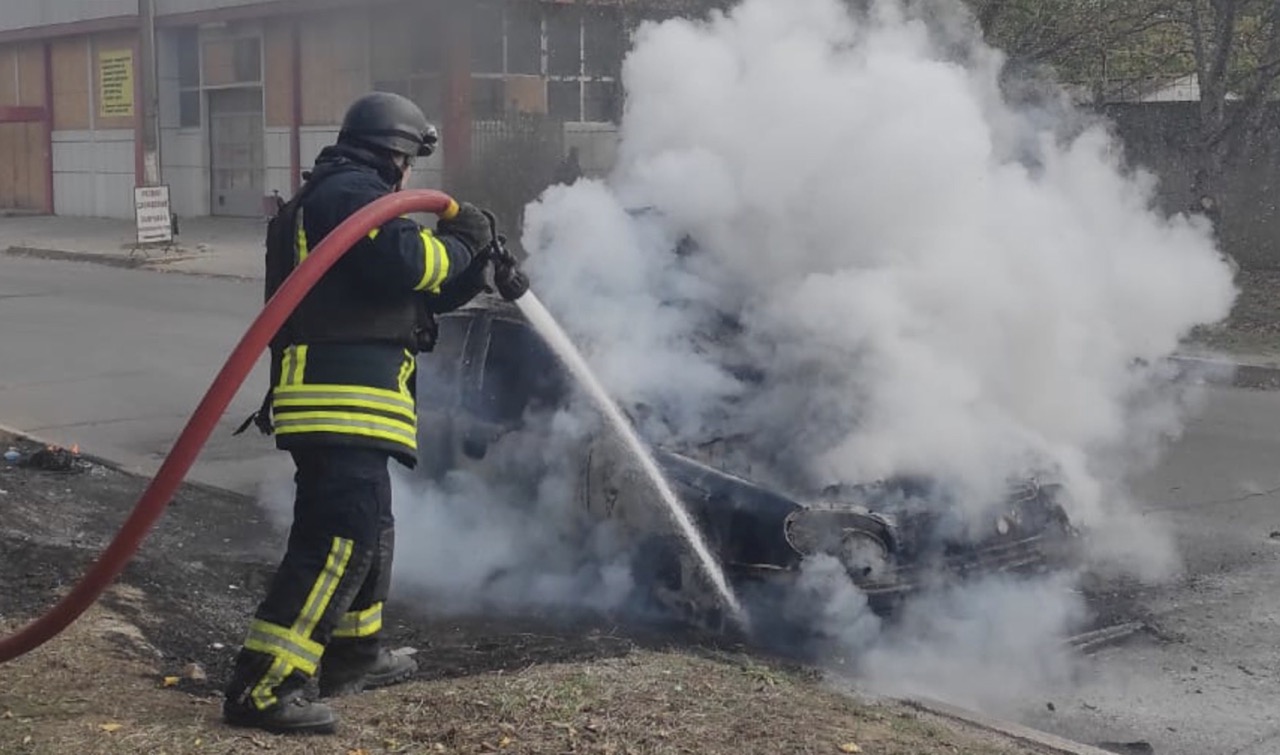The drone hovered overhead with its camera running. It followed a man as he ran from his house toward shelter. Tracked his movements. Waited. Then struck.
"We are hit every day," the man later told investigators. "Drones fly at any time—morning, evening, day or night, constantly."
That feeling—of being perpetually watched, perpetually hunted—turned out to be Russia's strategy.
The pattern emerges
Across three oblasts in southern Ukraine throughout 2025, the attacks followed the same method. Drones with cameras. Civilians were tracked as they fled. Strikes timed for maximum terror. Then something that made investigators certain this wasn't random combat: the drones came back.
The same targets hit again. And again.
Ambulances with clear protective markings—vehicles that international law specifically shields from attack—struck multiple times. Fire brigades hit while responding to earlier strikes. Humanitarian distribution points where civilians gathered for aid. Power infrastructure serving hospitals and homes.
The attacks spanned Kherson, Dnipropetrovsk, and Mykolaiv oblasts along the right bank of the Dnipro River—a 300-kilometer stretch of Ukrainian-held territory. The question for investigators was: Was this chaos or coordination?
247 videos, 226 witnesses
The Independent International Commission of Inquiry on Ukraine spent months collecting evidence. They gathered roughly 500 videos from the affected regions, verified 247 of them, and interviewed 226 survivors and witnesses.
The evidence showed coordination, centralized command, and systematic methodology designed not to win tactical victories but to empty entire regions of their populations.
On 27 October 2025, the Commission presented its findings to the UN General Assembly's Third Committee with a stark conclusion: this isn't warfare. It's two distinct crimes against humanity.
This wasn't chaos, it was policy
War crimes and crimes against humanity aren't the same thing. War crimes can be isolated—a commander's decision, a unit's actions, a moment's brutality. Crimes against humanity require something more: a widespread or systematic attack directed against a civilian population. Evidence of policy, not chaos.
The Commission found the policy.
The drone strikes weren't tactical errors or collateral damage from combat. They were designed to spread terror and force civilians from their land—what international law calls "murder and forcible transfer of population." The Commission also documented a second crime: deportations and transfers of civilians from Russian-occupied areas, some subjected to torture.
The distinction matters for one reason: accountability.
The cases being built
International humanitarian law has rules even for war. The Fourth Geneva Convention—recently given updated guidance by the International Committee of the Red Cross—protects ambulances, civilians, and essential infrastructure. It requires good faith interpretation to preserve the law's humanitarian purpose.
Russia's documented pattern—deliberately targeting marked emergency vehicles, using repeat strikes to prevent rescue operations, systematically hunting civilians with drone cameras—represents the opposite of good faith. It's a policy designed to empty the law of meaning while maximizing civilian harm.
The Commission isn't writing history. It's building legal cases. Every verified video, every witness interview, every documented pattern creates evidence that prosecutors can use. The classification as crimes against humanity means Russian commanders can't claim isolated decisions or tactical necessity.
The documentation shows system. And systems have planners.
Loud silence from Moscow
Russia does not recognize the Commission. It has not granted investigators access to occupied territories. It continues to deny intentionally targeting civilians despite extensive verified evidence showing coordinated attacks across 300 kilometers.
The Commission, established by the UN Human Rights Council on 4 March 2022, has had its mandate extended repeatedly—most recently in April 2025. It must submit a comprehensive report by February-April 2026.
The Commission has previously confirmed that torture and enforced disappearances by Russian authorities also constitute crimes against humanity, building a comprehensive record across multiple categories of international law.
The precedent
The stakes reach beyond Ukraine. Russia's defense arguments have been consistent: civilian casualties are unintentional collateral damage in legitimate military operations. We don't target civilians.
The UN report systematically dismantles this defense. The cameras on the drones weren't for targeting military positions. They were for tracking civilians. The repeated strikes on ambulances weren't targeting enemy fighters. They were preventing rescue operations. The 300-kilometer pattern wasn't the fog of war. It was a coordinated policy.
This changes calculations for international courts. Individual commanders can't claim they followed isolated combat orders when the documented evidence shows centralized planning. The UN has now created an authoritative, verified record that future prosecutors can use and that other militaries considering similar campaigns must account for.

